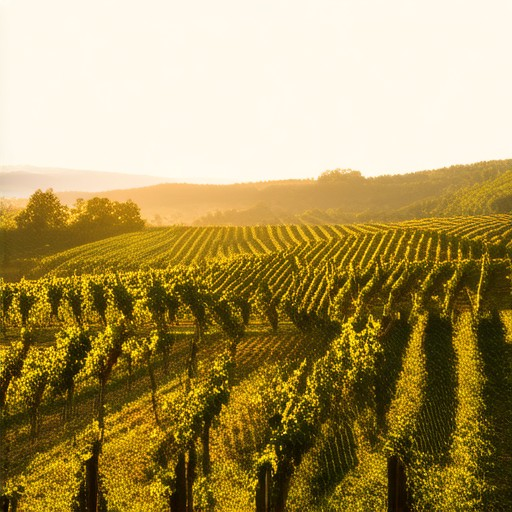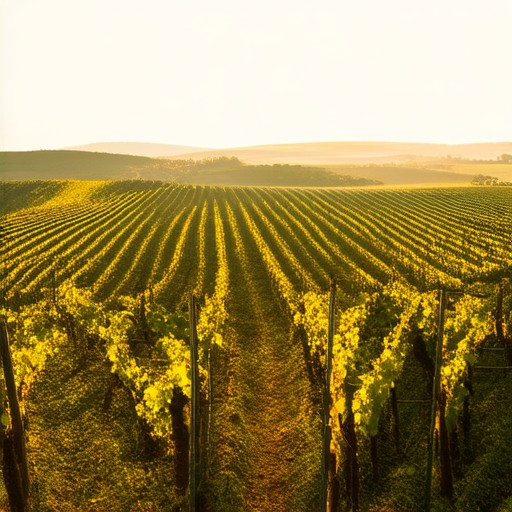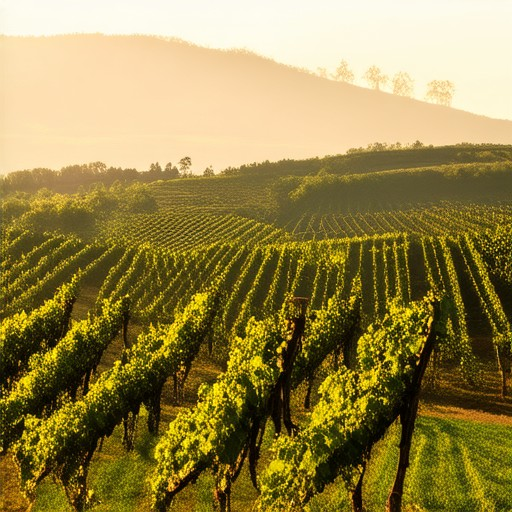Bordeaux, a region renowned for its world-class wines, offers a diverse tapestry of wine production that captivates wine enthusiasts globally. Known for its rich history, unique terroirs, and meticulous winemaking practices, Bordeaux wine regions have established themselves as benchmarks of quality and sophistication. From the iconic left bank to the prestigious right bank, each village within Bordeaux contributes distinctively to the global wine landscape. Whether exploring the opulent Médoc or the charming Entre-Deux-Mers, visitors and connoisseurs alike discover a mosaic of flavors, aromas, and stories that define Bordeaux wines. This article delves into the intricate details of Bordeaux wine regions, uncovering the secrets behind their success and the factors that shape their character. By understanding the geography, climate, and history, we reveal what makes Bordeaux wines truly exceptional.
Key Takeaways
– Differences Between Bordeaux and Médoc Wine Regions: Discover the distinct characteristics of Bordeaux and Médoc, including their geographical locations, climates, soils, and grape varietals.
– Top Grape Varieties in Médoc: Explore the primary grapes—Cabernet Sauvignon, Merlot, and Petit Verdot—that define Médoc’s renowned winemaking.
– How to Pronounce Médoc: Master the correct pronunciation of Médoc, a key region for fine French wines.

What is the Most Famous Wine Region in Bordeaux?
The most famous wine region in Bordeaux is the Médoc . Renowned for its rich history and world-class wineries, the Médoc produces some of the finest red wines in the world. Its terroir, characterized by gravelly soils and a temperate climate, is ideal for growing Cabernet Sauvignon and Merlot grapes, which are blended to create the iconic Bordeaux wines.
The Médoc is further distinguished by its sub-regions, including:
- Pauillac
- Saint-Julien
- Saint-Estephe
- Margaux
- Pessac-Léognan
These areas are celebrated for their bold, tannic wines that pair perfectly with red meats and can age gracefully for decades. While the Médoc dominates the spotlight, other notable regions like Graves and Sauternes also contribute significantly to Bordeaux’s reputation with their unique blends and sweet whites.
Explore the rich diversity of Bordeaux wines and their stories on our wine region guides .
Bordeaux Wine Villages
The Bordeaux wine region is renowned globally for its exceptional viticulture and diverse appellations. Below is a detailed overview of the key wine villages and regions within Bordeaux:
Major Wine Regions
Bordeaux is divided into several distinct wine-producing regions, each with its unique characteristics. The primary regions include:
- Médoc – Known for its rich, full-bodied red wines, particularly Cabernet Sauvignon and Merlot.
- Sauternes – Famous for its sweet, golden wines made from Sémillon grapes.
- Graves – Produces both red and white wines, known for their elegance and complexity.
Appellations with Village Names
There are several villages within these regions that have their own specific appelations, recognized for their unique terroir and wine quality. These include:
- Margaux – Renowned for its opulent red wines, often blended with Cabernet Sauvignon and Merlot.
- St-Julien – Known for its powerful yet refined red wines, primarily Cabernet Sauvignon-based blends.
- Pauillac – Famous for its robust, age-worthy red wines, typically dominated by Cabernet Sauvignon.
- St-Estèphe – Produces wines with a unique blend of power and finesse, often featuring Cabernet Sauvignon as the base.
- Listrac – Offers well-structured red wines with a good balance of fruit and tannins.
- Moulis – Known for its elegant red wines, blending elements of both Margaux and St-Julien.
Broad Classification
Outside of the specific village-level classifications, the majority of the region is labeled as Haut-Médoc . This broad classification encompasses many of the smaller villages and provides a general indication of the wine’s quality and origin.
Recommendations for Enthusiasts
If you’re exploring the wines of Bordeaux, consider visiting the following villages and regions to experience the diversity of the region firsthand:
- Château Margaux – A benchmark for luxury Bordeaux wines.
- Château Lafite-Rothschild – A leader in Pauillac, known for its iconic red wines.
- Château Mouton Rothschild – A historic estate in Pauillac.
- Château d’Yquem – A legendary name in Sauternes.
For more information on Bordeaux wines and the villages mentioned, we recommend exploring resources like Fine Vines , which offers comprehensive guides and expert insights into the world of wine.

Bordeaux Wine Classifications Explained
The Bordeaux region in France is renowned for its high-quality wines, organized into a sophisticated classification system. Here are the five primary levels of Bordeaux wine:
- 1. Premier Cru: Wines labeled as Premier Cru are among the highest quality in their appellation. They must meet strict yield restrictions and undergo rigorous tasting room inspections.
- 2. Grand Cru: Grand Cru is the highest designation in many Bordeaux appellations. These wines are produced from the finest parcels and require approval from the local wine council.
- 3. AOC (Appellation d’Origine Contrôlée): This is the general classification for wines from specific regions within Bordeaux. AOC ensures wines meet quality standards based on grape variety and growing conditions.
- 4. Vin de Pays: This category includes wines from specific regions within Bordeaux that may not qualify for AOC status. They are still high quality but less exclusive.
- 5. IGP (Indication Géographique Protégée): Similar to Vin de Pays, IGP designates wines from protected geographical areas. These wines offer great quality but are less formally classified.

Bordeaux vs. Médoc: Understanding the Differences
The regions of Bordeaux and Médoc are both renowned for producing exceptional wines, but they have distinct characteristics and histories. Here’s a breakdown of the key differences:
- Geography and Location: – Bordeaux is a large wine-growing region in southwestern France, spanning over 120 kilometers along the Garonne River. – Médoc, on the other hand, is a smaller appellation located on the left bank of the Gironde estuary, south of Bordeaux. It is part of the broader Bordeaux region but has its own unique identity.
- Climate and Soil: – Médoc experiences a slightly cooler climate due to its proximity to the Atlantic Ocean, which can result in wines with more refined tannins and greater acidity. – The soils in Médoc are predominantly gravel-based, providing excellent drainage and contributing to the structure of the wines.
- Grape Varieties: – Both regions primarily grow Cabernet Sauvignon and Merlot, which are blended to create the iconic red wines. – Médoc may have a higher percentage of Cabernet Sauvignon compared to Bordeaux, resulting in wines with more tannic strength and complexity.
- Wine Style: – Wines from Médoc are often described as elegant and age-worthy, with a focus on balance and precision. – Bordeaux wines, while also high in quality, tend to be more approachable and fruit-forward, with a focus on drinkability.
Both regions are celebrated for their ability to produce some of the world’s finest red wines, but the subtle differences in climate, soil, and grape usage lead to distinctive profiles. Whether you prefer the structured elegance of Médoc or the versatile charm of Bordeaux, both offer unforgettable wine experiences.
What are the Three Major Varietals of Médoc?
- Cabernet Sauvignon: This is the most widely planted grape variety in Médoc, known for producing robust, rich, and age-worthy wines with notes of blackcurrant, cedar, and tobacco.
- Merlot: A versatile grape that contributes softness and fruitiness to blends. It often complements Cabernet Sauvignon, adding layers of plum, chocolate, and spice.
- Petit Verdot: A smaller but significant player, Petit Verdot adds complexity and tannins to the blends. It offers intense flavors of blackberry, violet, and dried herbs.
The Médoc AOC is renowned for its ability to blend these varieties to create balanced, elegant wines that reflect the region’s terroir. The combination of these grapes allows for both approachable young wines and ageworthy bottlings that develop gracefully with age.

How to Pronounce Médoc?
Médoc is a region in France known for its fine wines, particularly red wines. Here’s how to correctly pronounce the name:
- Médoc is pronounced as “MAH-dahk” (Mé-doc)
- The first syllable “Mé” is stressed and sounds like “MEH.”
- The second syllable “doc” is pronounced as “dahk.”
So together, it sounds like “MAH-dahk” or “MEH-dahk.”
Remember, the stress is on the first syllable, making it sound like “Meh” followed by “dahk.”
With practice, you’ll get used to the rhythm and can confidently pronounce Médoc like a local!



0 Comments